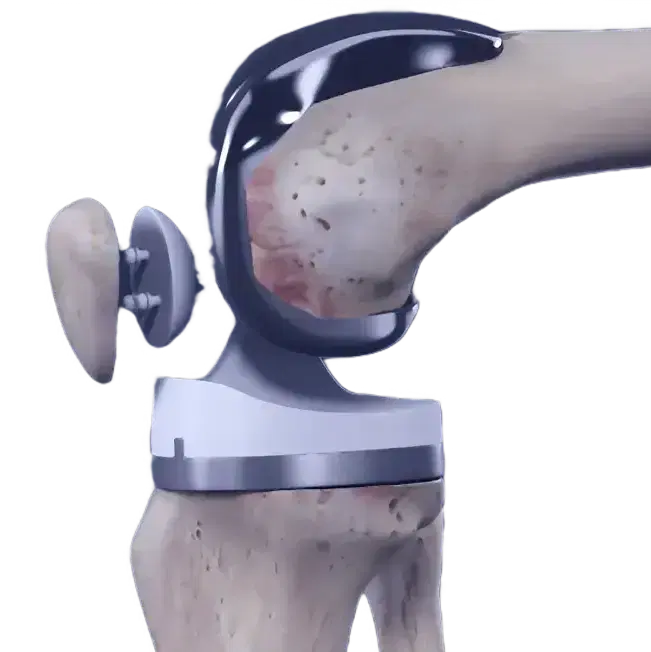What isthe ACL?


How is
it injured?
The ACL is a commonly injured ligament. Most injuries are sustained during a pivoting movement.
Typically when the foot is planted on the ground and the body twists above the planted foot, such as can occur with sudden changes in direction or landing awkwardly from a jump.
Most injuries are a non-contact mechanism.
What are the risk factors
for suffering an ACL rupture?
Some well-known risk factors include:

Type of sport
Much more common in sports that require pivoting or side stepping activity such as netball, basketball, football etc.
Higher prevalence in females
ACL ruptures are more common in females. The reasons are many but can include the physical anatomy of the knee and hormonal factors
Previous ACL rupture
Having experienced an ACL rupture in the other knee increases the risk of future ACL injuries.
Artificial playing surfaces
Participating activities on artificial playing surfaces can elevate the risk of ACL injuries compared to natural turf or grass fields.
What are the symptoms
of a torn ACL?
Patients with an ACL rupture often recall the injury, experiencing an audible "pop" and severe pain that may require ambulance transport. Immediate swelling and difficulty moving the knee are common, necessitating crutches and pain medication.
In some cases, the injury leads to a locked knee with limited movement due to a large meniscal tear. This requires urgent orthopaedic evaluation. It's important to differentiate ACL rupture from patella dislocation or meniscus tear.
Some patients recover without seeking orthopaedic assessment but later experience recurrent instability, pain, and swelling during physical activities, prompting them to seek medical attention.
What should I do
after an episode of instability?
Sometimes an ACL rupture can be diagnosed with a classic history of a pivoting injury, a classic “pop”, and immediate pain and gross swelling. In all cases an examination of the knee should occur, not only to confirm the diagnosis but also to test for associated injuries to other structures of the knee such as other ligaments and cartilage.
At times the severity of the pain and the degree of swelling can make the examination difficult.



At times the severity of the pain and the degree of swelling can make the examination difficult.
An MRI scan will be able to definitively diagnose a rupture to the ACL.
Do I need an x-ray?
An x-ray is typically done to rule out bone fractures at the time of injury. If the patient can walk, an x-ray is unnecessary as the MRI scan can detect any bone injuries.
Do I
need an ultrasound?
There is no indication or clinical usefulness to preform an ultrasound in a patient suspected of having an ACL rupture.
What should I do in the interval between injury and seeing an Orthopaedic surgeon?

It is important to control pain and swelling through the use of rest, ice, compression and elevation (RICE) and anti-inflammatory medication. All these measures make moving the knee easier, thus preventing stiffness and severe muscle wasting.
If the x-rays that you have had do not show a fracture, it is important to try and bear some weight through the injured limb. This also prevents muscle wasting as well as deconditioning of the bone (disuse osteoporosis).
Should I have a MRI scan if you can tell my ACL is ruptured from my physical examination?
In my opinion, all suspected ACL ruptures should undergo an MRI scan. It confirms the diagnosis and, importantly, assesses potential damage to other knee structures like ligaments, meniscus, and cartilage.
What are the long-term effects of not having an ACL?
If there are no associated injuries and no true ACL instability episodes, there are no long-term negative effects of not having an ACL.
However, in cases of true ACL instability, the situation changes significantly. Without surgery, each instability episode carries a high risk of additional knee damage, such as meniscus tears or cartilage damage, which may not be repairable and can lead to premature arthritis.
It is strongly recommended that patients with true ACL instability undergo ACL reconstruction to prevent further knee damage and instability.

Do all ACL ruptures require surgery?
Not all ACL ruptures require surgery. The need for surgery is determined by multiple factors including
Age of patient
Activity level of the patient
Associated injuries to the knee
Has had episodes of ACL instability since the injury
This needs to be determined at your consultation.
Generally, younger and more active patients, especially those desiring a return to pivoting sports, face a higher risk of developing instability. In such cases, ACL reconstruction is recommended to mitigate the risk of future instability if surgery is not pursued.
Is the surgery a
reconstruction or a repair?
Repairing an ACL tear by suturing the two ends together is now mostly outdated due to high failure rates.
Current ACL surgeries involve reconstruction, where the damaged tissue is replaced with a graft. The most common grafts use the patient's own tissue, but allografts (tissue from donors) and synthetic ligaments are also options discussed in the ACL reconstruction surgery section.

How soon should I have my
reconstruction?
Unless the knee is locked from a torn cartilage jammed in the knee or there are associated injuries, which require surgery, there is no urgency to perform your ACL reconstruction.
The reconstruction is best performed on a knee with minimal swelling, which is bending well, in a patient with a near normal gait. Often the reconstruction is timed for a period that suits work or study commitments.


Do you need a
Knee replacement?
Dr Seeto in affiliation with Medibank Private and East Sydney Private hospital, offers a program for eligible Medibank Private Members, to eliminate medical out of pocket costs for your Knee Replacement.
The program includes a pre-surgery preparation program, spending the minimal time necessary in hospital, as well as home rehabilitation if necessary.
Book a consultation
today
9:00 am - 4:30 pm





